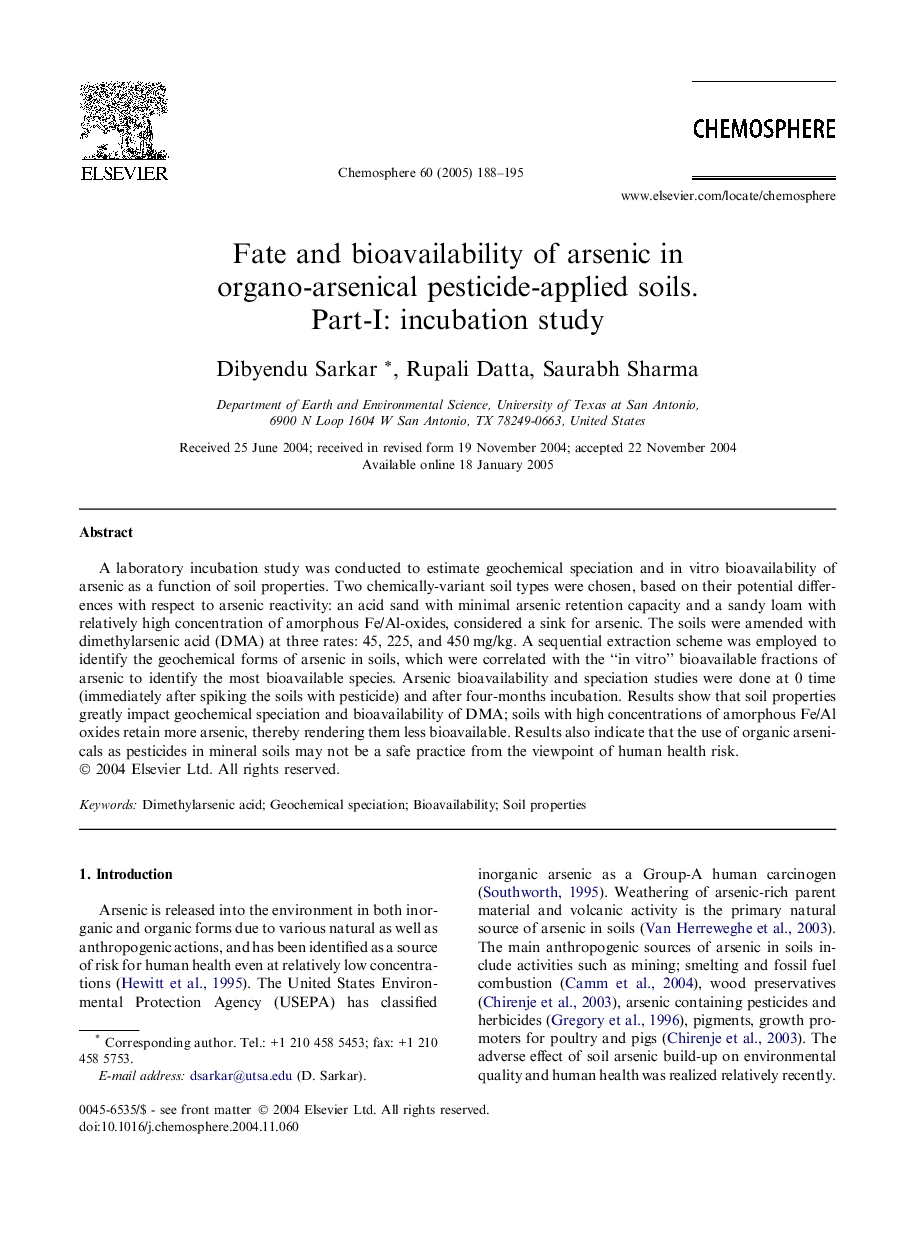| Article ID | Journal | Published Year | Pages | File Type |
|---|---|---|---|---|
| 9451787 | Chemosphere | 2005 | 8 Pages |
Abstract
A laboratory incubation study was conducted to estimate geochemical speciation and in vitro bioavailability of arsenic as a function of soil properties. Two chemically-variant soil types were chosen, based on their potential differences with respect to arsenic reactivity: an acid sand with minimal arsenic retention capacity and a sandy loam with relatively high concentration of amorphous Fe/Al-oxides, considered a sink for arsenic. The soils were amended with dimethylarsenic acid (DMA) at three rates: 45, 225, and 450Â mg/kg. A sequential extraction scheme was employed to identify the geochemical forms of arsenic in soils, which were correlated with the “in vitro” bioavailable fractions of arsenic to identify the most bioavailable species. Arsenic bioavailability and speciation studies were done at 0 time (immediately after spiking the soils with pesticide) and after four-months incubation. Results show that soil properties greatly impact geochemical speciation and bioavailability of DMA; soils with high concentrations of amorphous Fe/Al oxides retain more arsenic, thereby rendering them less bioavailable. Results also indicate that the use of organic arsenicals as pesticides in mineral soils may not be a safe practice from the viewpoint of human health risk.
Related Topics
Life Sciences
Environmental Science
Environmental Chemistry
Authors
Dibyendu Sarkar, Rupali Datta, Saurabh Sharma,
